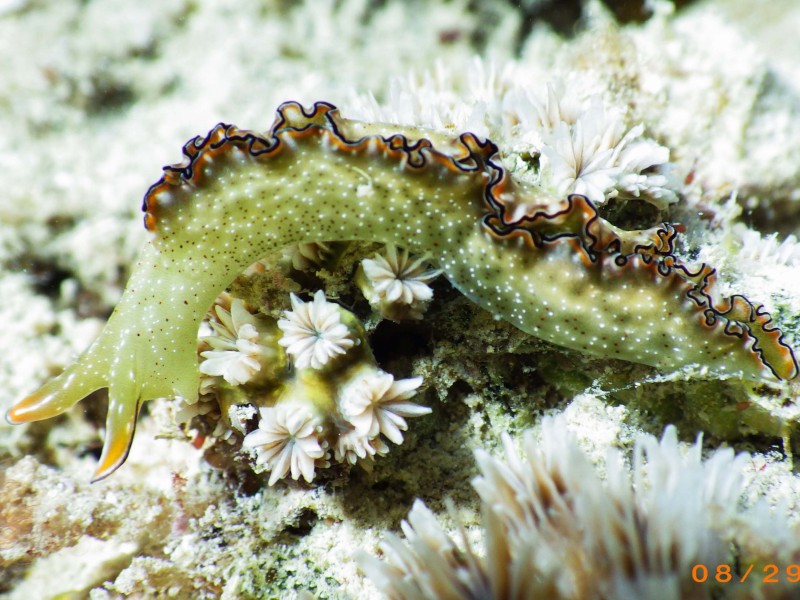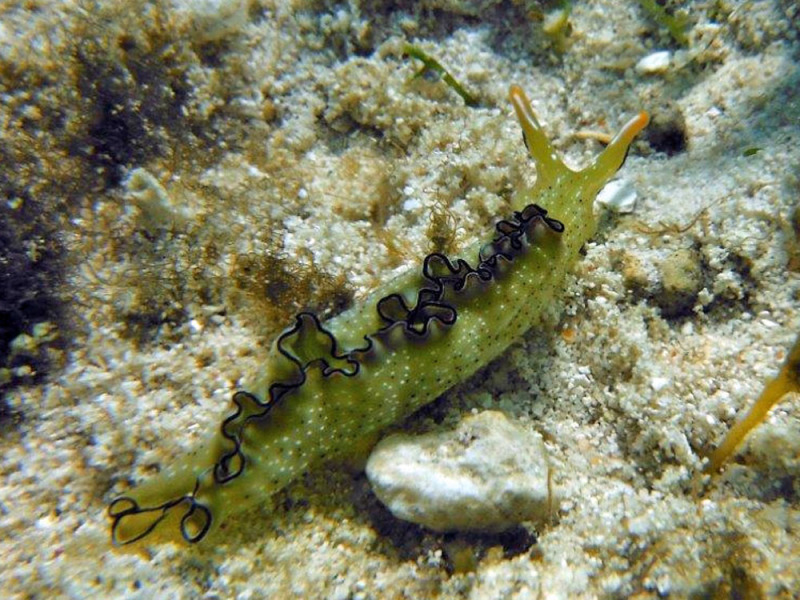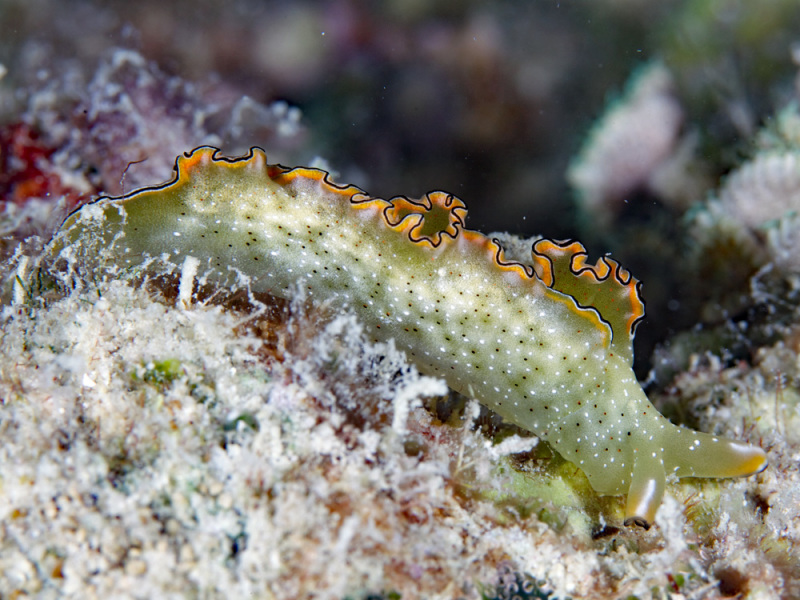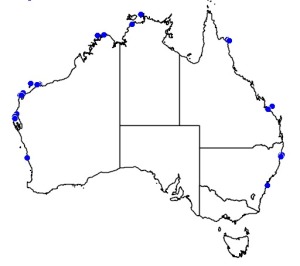Colours
Distinguishing features
Bill Rudman notes in Sea Slug Forum (accessed 2013): "The animal is usually a translucent green colour with a black parapodial margin and a submarginal yellow or orange band. Sometimes there is a white line between the orange and yellow bands. The tip of the rhinophores often have the same colour bands. There are also numerous black and white dots all over the body."
As noted in WoRMS (accessed 2 Mar 2022, quote below), the name Elysia ornata is incorrectly applied to Indo-Pacific specimens. An existing name might be applicable for the GBR species (but it isn't clear which), or it might be undescribed.
"Other genetically distinct Indo-Pacific species have a similar external morphology and anatomy and have been placed in the synonymy of Elysia ornata (Jensen 1992), thus it is important to determine the type locality of all available names for this species complex. No type locality was specified in the original description of Thallepus ornatus, but because Reverend Guilding [1797–1831] lived in St. Vincent and worked exclusively on Caribbean natural history (Howard & Howard 1985), it is almost certain that the specimen used in the drawing was found in the Caribbean Sea. Two other large species of Elysia feeding on Bryopsis spp. were described from the tropical Pacific. Both have a black band along the parapodial edge and a submarginal orange band similar to those of E. ornata. The first species, E. grandifolia (Kelaart, 1858), was described from Sri Lanka as having black and gold marginal lines along parapodia that fused with the tail (Kelaart 1858). The second species, E. marginata (Pease, 1871) was originally described from the Hawaiian Islands and subsequently from Tahiti as having a white band between the orange and black marginal bands (Pease 1871). Authorities subsequently debated whether E.grandifolia had denticulate teeth (Eliot 1904, 1908; O’Donoghue 1932). Both E. marginata and E. grandifolia were synonymized with E. ornata based on morphological comparisons between Pacific and Caribbean material (Ev. Marcus 1980; Heller & Thompson 1983; Jensen 1992). Recent integrative taxonomic work revealed that the E. marginata-grandifolia complex contained four candidate species in Pacific, all distinct from each other and from E. ornata by (1) molecular sequence analyses of two genetic loci; (2) external features including color of rhinophores and marginal bands, folding of parapodia into siphonal openings, tail shape, and pattern of dorsal vessels; and (3) color and pattern of ECY (Krug et al. 2013). Elysia ornata is therefore restricted to the Caribbean, and some related Pacific species await formal description.
Source: Krug P.J., Vendetti J.E. & Valdés Á. (2016). Molecular and morphological systematics of Elysia Risso, 1818 (Heterobranchia: Sacoglossa) from the Caribbean region. Zootaxa. 4148(1): 1-137."
Size
- Size data has not been obtained.
Synonyms
Similar taxa
-
Animalia:
species: Elysia ornata
is a valid species that is now known to be restricted to the Caribbean. Before 2016, the name was used for several simlar-looking species in the Pacific.
Distribution
Web resources
References
- Christa., G., K. Händeler, P. Kück, M. Vleugels, J. Franken, D. Karmeinski and H. Wägele (2015). Phylogenetic evidence for multiple independent origins of functional kleptoplasty in Sacoglossa (Heterobranchia, Gastropoda), Organisms, Diversity and Evolution, 15: 23-26. LIRS catalog number 1870.
- Christa, G., K. Haendeler, T.F. Schaberle, G.M. Konig and H. Wagele (2014). Identification of sequestered chloroplasts in photosynthetic and non-photosynthetic sacoglossan sea slugs (Mollusca, Gastropoda), Frontiers in Zoology, 11. LIRS catalog number 1785.
- Cortesi, F. and K.L. Cheney (2010). Conspicuousness is correlated with toxicity in marine opisthobranchs, Journal of Evolutionary Biology, 23: 1509-1518. LIRS catalog number 1360.
- View all references



